In a genre where finales are rarely final, and resurrections are a daily occurrence, why did the death of comic book hero Captain America garner such widespread attention?
Captain America is dead. Again. Probably. Indefinitely. For the foreseeable future. Until comic sales begin to flag yet again.
To the embittered fan acclimatised to the age of the antihero, the demise of one more spandex-clad pensioner might have sounded like a desperate call for attention from a dying comic industry. But to the rest of the world, it suddenly mattered, the world-wide media coverage lasting several days, with stores selling out of Captain America #25 within the hour. America’s star spangled son had walked unnoticed for several decades; rejected by Hollywood and outdated since the seventies, only in death did the his 65 year battle against oppression seem at all relevant.
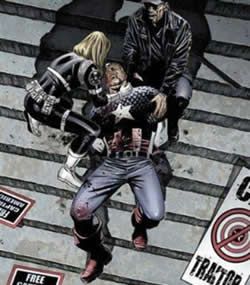
It would be easy to interpret the humdrum, almost “realistic” death of Steve Rogers as a crude commentary on a guilty post-Iraq America, a reflection on the decline of America’s flag-waving sentimentality, one more proud young American who died for a dubious cause. But perhaps Captain America was something more than the archetypal Caucasian patriot. Perhaps he stood for something more.
More so than any other serial fiction, comics have always reflected the underlying vibe of their times. Siegel and Schuster’s seminal Jewish creation Superman was instrumental in the DC Universe’s Allied victory against the Nazi regime. Superman’s arch nemesis Lex Luthor became president of the USA just months after George Bush’s controversial defeat over Al Gore, while Britain’s most (in)famous creation Judge Dredd began his totalitarian war on crime on the brink of Thatcher’s reign. The funny books saw the rise of the ultra-violent, vigilante hero during New York’s crime problems in the late seventies, and the return to a more traditional hero as the city cleaned itself up, and it was not until the liberal 90s that Alpha Flight’s Northstar could openly announce his homosexuality, a sexual orientation hinted at but never discussed since his creation some 13 years earlier. But none had quite the debut as Cap. The patriotic muscle-head’s first cover depicted him delivering Adolf Hitler his own brand of fist-to-jaw diplomacy; only in the bold, four-colour comic panel could relentless, brute force convey purest justice.
Somewhat oblivious to the attention it would receive, Marvel did not widely publicise the event, severely underestimating demand for Cap’s final issue. For Cap’s fans it could not have happened at a worst time; writer Ed Brubacker’s acclaimed Winter Soldier run had seen a resurgence of the character, with a movie deal and video gamed planned for 2009. With the Spider-man, X-men and Fantastic Four franchises breaking box office records, and over a dozen further comic book adaptations sequels and spin-offs planned for release before 2010, one must wonder why Marvel has been reluctant to bring their flagship to the silver screen.
During a comic collecting boom in the mid 90’s, DC infamously killed its flagship hero Superman, and crippled the legendary Batman. Both moves proved financially successful, albeit briefly, but condemned by fans, and both characters were returned within the year. With Spider-man 3 currently demolishing all box office records, one might assume that the comic industry has prospered from the Superhero blockbuster boom. But hits such as Ghost Rider and Batman Begins are having only a minimal effect on the industry. Captain America’s exit, a shock ending tagged onto the tepidly received Civil War event may have made the headlines, but will see only a temporary rise in sales.
Of course, the need for weekly doses of sensationalism has led to the majority of prime-time US shows whoring themselves out to the water cooler in-crowd. 24 killed almost every regular character off last year, including fan favourite Tony Alameda, and has suffered critically and commercially this year due to a lack of familiar faces. Lost regularly ups its nelson ratings with the promise of an islander’s departure, with Prison Break’s second season drop in escapees lending the show a leaner, meaner pacing. Perhaps the cast culling is a necessity of serial drama; Buffy and Alias suffered far worse, undergoing retcons and reboots with each season. Like an aging rock star the serial drama hero must change or die, evolving with every movie incarnation and cultural shift.
The death of the hero is far from a recent trend, having echoed through the earliest myths. A weary Conan Doyle killed Sherlock Holmes only to revive him due to rabid public demand, yet Holme’s climactic struggle with arch-enemy James Moriarty over Reichenbach Falls is the sleuth’s most memorable moment. Perhaps Holme’s apparent death means more because it was intended as final; something that no comic book death will ever be.
As the age old comic book adage goes, “nobody stays dead in comics except Bucky, Jason Todd, and Uncle Ben”, two of whom have now been revived multiple times since its conception. Bruce Lee, Jim Hendrix and Bob Marley all gained cultural immortality from untimely deaths, but unlike Uncle Ben, they won’t be coming back anytime soon. To the devout fanatic, the dead hero’s inevitable resurrection is an embarrassment to the medium, but perhaps the possibility of a comeback is what gives the death its resonance. Jesus’ resurrection is what makes Easter the celebration of a miracle rather than the mourning of an execution by order of the (super)villainous Pontius Pilate.
Pushing lamentable biblical allusions aside, the mythical hero is the only contemporary fictional entity capable of travelling to the furthest reaches of the subconscious curiosity and back again. With all but the deepest oceans discovered, chartered and filed away, and deep space exploration no longer a fantasy but a matter of time, the hereafter is the only journey from which there’ll be no postcards.
Though the superhero does not age, he does date and fade into obscurity. Captain America is a more powerful icon now that he’s dead. He’ll return, the red white and blue worn by Steve Rogers or someone else. But I can’t help but doubt whether the values he once stood for will have stayed the same.

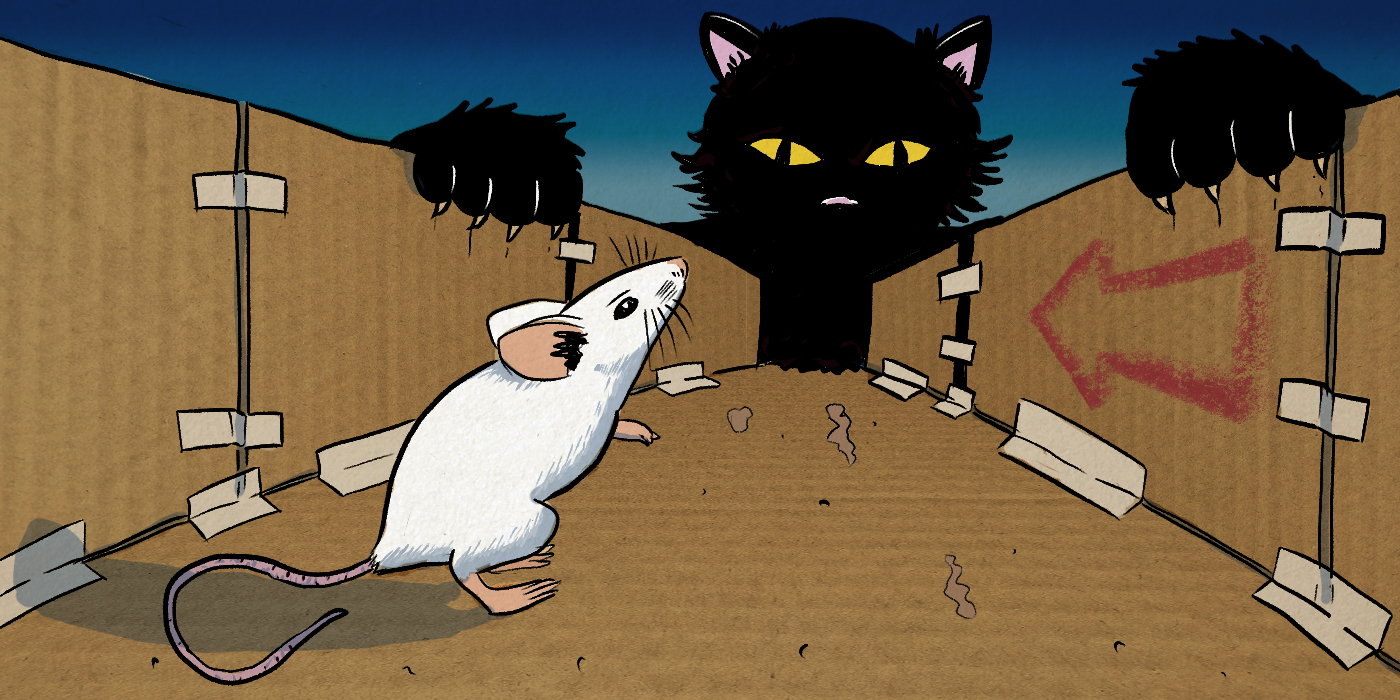
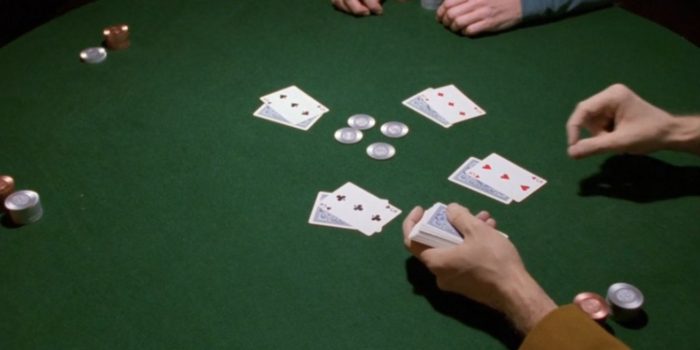


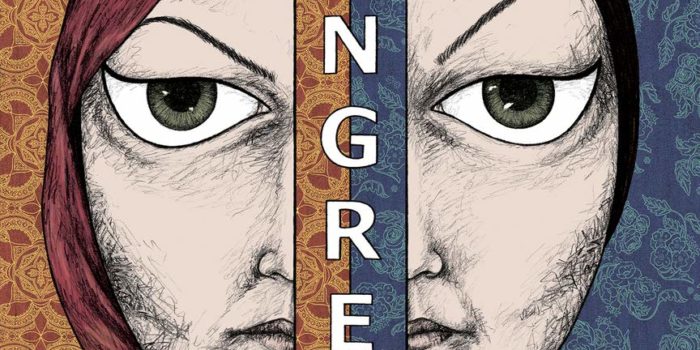
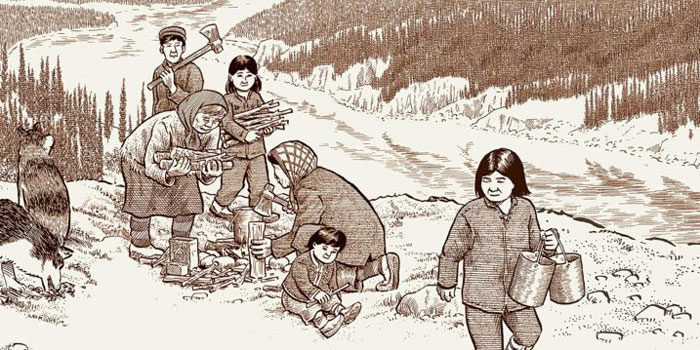
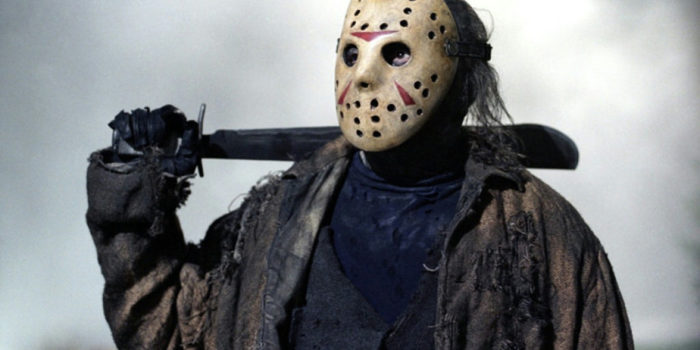

Leave a Reply